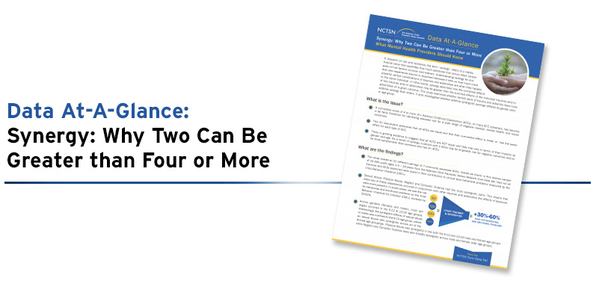Data At-A-Glance: Synergy: Why Two Can Be Greater than Four or More
Offers providers information about synergy for children who experience trauma. This fact sheet is a summary of important points from a NCTSN Core Data Set publication developed to help providers understand whether certain pairs of trauma and adversity have more additive synergy than others. It also shares whether additive synergistic pairings differed by gender and/ or age group. This product looks at the issue, the findings, and what you can do as a provider.
Children’s Book: AJ’s Story About Not OK Touches
Provides parents, caregivers, and providers with a way to talk to children who have engaged in problematic sexual behaviors. It can also be used to talk to a child who has been impacted by these behaviors. This children’s book includes an Adult Reader Guide and a list of helpful resources for parents, caregivers, and other adults to reference.
Now Available on Demand! Surviving and Thriving: Conversations About Community Violence and COVID-19: White Supremacy Resurgences and Cultural Healing Responses for Asian, Native, and Black American Youth
Despite stated principles of inclusion as U.S. policy, “White supremacy” culture has systematically served as the formation, foundation, and expression of institutional racism throughout U.S. history by employing institutional policies and cultural conflicts of “divide and conquer” between different communities. The current and concerning rise in attacks against Asian-Americans reflects an underlying societal problem that requires urgent and radical healing approaches to pull out the roots of racism, dismantle White supremacist structures, and shift toward more pluralistic, mutually supportive, and trauma-informed relationships in society. This webinar addresses these issues through a panel discussion and subsequent recommendations for forward progress.
New Webinar! Refugee Resettlement in 2021 by Trauma and Community Resilience Center
Highlights current trends in refugee resettlement and the current needs and challenges faced by forcibly displaced communities seeking safety in the United States. This webinar also shares how refugee communities have been impacted by COVID-19.
Children with Problematic Sexual Behavior (PSB): Recommendations for the Multidisciplinary Team (MDT) and Children’s Advocacy Center (CAC) Response
Focuses on how cases of children ages 12 and younger who initiate Problematic Sexual Behavior, the child victim(s), and their families could be successfully served by CACs and MDTs. Together, the MDT approach and the CAC model are ideal vehicles for providing resources needed for the development and implementation of an integrated and comprehensive systems approach to cases of children with PSB and their families.
RECENT JOURNAL PUBLICATIONS
Authored by Anthony P. Mannarino and Judith A. Cohen, Evidence-Based Treatment for Victims of Child Sexual Abuse and Exploitation focuses on evidence-based treatments (EBTs) for victims of child abuse and other exploitation. The introductory section addresses how the separate fields of child maltreatment and childhood trauma merged in the early 2000s. There is also a discussion of three major facets of EBTs for childhood trauma, including parental involvement, a phased-based approach, and trauma narration and processing. Provides a brief summary of EBTs for childhood traumas that have some relevance for sexual abuse. The last part of the chapter focuses on trauma-focused cognitive behavioral therapy (TF-CBT) which is the EBT for the sequelae of childhood trauma that has the greatest amount of empirical support. There is an overview of the components of TF-CBT and the clinical implications of these interventions for children who have experienced sexual abuse or other sexual exploitation. Two major randomized clinical trials of TF-CBT for children who have been sexually victimized are described. Lastly, it discusses the implications of this research for online sexual exploitation.
Written by Ryan M. Hill, Kimberly L. Gushanas, Lauren Alvis, Cody G. Dodd, Sherin Kurian, Johanna Saxena, Kirti Saxena, Julie B. Kaplow, Katrina Rufino, and Laurel Williams, Geospatial Identification Of High Youth Suicide Risk Areas Via Electronic Health Records: Avenues For Research And Prevention Efforts, demonstrates an analytic approach for using universal suicide risk screening data to identify areas of elevated suicide risk.












Comments (0)